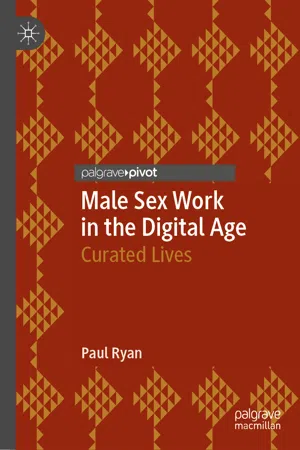The Normalisation of the Sex Industry
This study was undertaken within a context of the ongoing normalisation of the sex industry . This development has a number of facets. There has been a documented increased visibility of adult entertainment industries throughout cities in Europe, driven by local governance laws and sex-related tourism (Hubbard et al. 2008: 376). This tourism, combined with a growth in the leisure industry, technology and changing consumer patterns has contributed to this increased visibility of sexual commerce, blurring the boundaries between mainstream industries (Brents and Sanders 2010: 376; Sanders et al. 2018: 2). This normalisation is particularly evident in relation to male sex work . Later in this chapter, I discuss how the social meanings attached to male prostitution have changed over history, where it was the association with homosexuality and class transgression that located the practice within a deviancy perspective (MacPhail et al. 2015: 485). The aspirations of the post decriminalisation gay movement were forged under unique economic circumstances that saw Ireland emerge as the clearest example of small country liberalism in Europe (Ó Riain 2014: 9). Pro-market reforms combined with a leaner government and a ‘privatized economy’ could now coexist with a politics of identity and equality. In Ireland and other liberal economies, issue of care and social reproduction continued to be privatised or to be deemed the personal responsibility of families or wider civil society. Under such a framework, I argue that liberalism needed to ‘create’ new families to share the burden of this redistribution of social costs leading to broad political support for gay marriage, successfully passed by referendum in 2015. Male sex work has been a beneficiary of this legislative success, where men have been afforded greater agency and respectability for their sexual entrepreneurship, in sharp contrast to the exclusively coercive portrayal of female workers. Male sex work has benefited from the technological revolution that has dramatically reduced the existence of street work, increasing the number of middle-class workers attracted by greater privacy, safety and flexibility from working at home (McLean 2013). In Chapter 3, I argue that it is within this technology, like the dating app Grindr that male sex work has become the most visible, blurring boundaries between economic and physical capital in sex, dating and relationships . In this reimagining of intimate relationships, distinguishing between those who possess agency and power with coercion and victimhood becomes a more nuanced endeavour.
